Climate change is a global problem that has a large impact on cities. An urban digital twin can help cities combat the effects of climate change and reach their sustainability goals.
The UN reports that climate change events like floods, droughts and storms “have costly impacts on cities’ basic services, infrastructure, housing, human livelihoods and health. At the same time, cities are a key contributor to climate change, as urban activities are major sources of greenhouse gas emissions.” In fact, the UN said, cities are estimated to produce 75% of the world’s CO2 emissions.
The UN’s Sustainable Development Goals (SDGs) “are the blueprint to achieve a better and more sustainable future for all. Goal 11 is “Make cities inclusive, safe, resilient and sustainable.” Urban digital twin technologies can help make that goal a reality.
How can an urban digital twin help?
First, let’s define it.
A true urban digital twin consists of multiple layers. The first is a digital replica – the digital city. Adding data from IoT creates the second – the connected city. Applying AI and simulations to that data produces the third – the intelligent city.
Aiding city sustainability goals
Cities are facing challenges such as heat waves, heavy rains, pollution, urban flooding and threats to green spaces. Leaders want to combat these challenges by implementing sustainability initiatives that not only reduce their communities’ carbon footprints, but also make their cities more livable for residents.
Here are just a few examples of problems cities are facing and how urban digital twins can help.
1.Accessing sustainable renewable energy sources
An urban digital twin can help cities make more informed decisions when it comes to implementing solar energy by helping identify areas that receive sufficient sunlight and are free from shading. By analyzing factors such as the angle and orientation of the panels, shading from nearby buildings or trees and weather patterns, city officials can estimate how much energy the panels will generate over time. Once solar panels have been installed, the urban digital twin can monitor their performance in real time. By analyzing data from sensors installed on the panels, officials can quickly identify any issues that may arise and take action to address them, like adding battery packs for street lighting.
The City of Klagenfurt in Austria uses its digital twin for this purpose, among others. Its digital twin goes as far as calculating the effects of shadows cast by each individual tree, in summer and in winter, to give a precise calculation of the solar energy potential of each Klagenfurt home and business.
2. Reducing pollution
Because cities are packed with people, buildings and concrete, it stands to reason that air pollution is often higher in urban areas than rural ones. To reduce emissions, hot spots need to be identified first. This can be achieved with a network of air quality sensors throughout a city that continuously capture information. An urban digital twin can replay this data and determine when air pollution increases during the day. To understand the cause of air pollution, it is useful to include other data such as traffic data or information on construction sites within a city. Once measures have been taken to reduce pollution, e.g., banning heavy polluting vehicles to establish a low emission zone in a particular area, the effectiveness of that measure can be evaluated within the urban digital twin.
TRAGSATEC, a state-owned company focused on environmental protection, is delivering Spain’s first digital twin. It will provide authorities with a web-based 3D platform to simulate potential environmental issues that could affect the Campo de Cartagena region and the Menor Sea, a coastal saltwater lagoon. The digital twin will allow the Ministry for the Ecological Transition and the Demographic Challenge (MITECO) to make visual comparisons of changes to water, vegetation and the built environment over time and run simulations to predict and prevent disasters, including flooding, pollution and the effects of climate change. For example, by leveraging air quality sensors, officials could use the digital twin to identify hot spots where air pollution has concentrated and model mitigation options, such as planting trees.
3. Increasing and maintaining urban green spaces
Heat islands – the phenomenon of temperatures being higher within cities than in neighboring rural zones – amplify the effects of heatwaves and increase health risks. The European Commission reported this summer that increasing tree coverage to 30% in European cities could reduce deaths linked to urban heat island effect.
An urban digital twin can use machine learning algorithms to predict the areas in a city that are most likely to become heat islands based on factors such as land use, building density and vegetation cover. This can help city planners identify areas that need cooling interventions. The effects of different interventions aimed at reducing heat islands – such as planting more trees, the installation of green roofs or the creation of more green spaces – can be simulated with the urban digital twin. Additionally, the urban digital twin can be used to educate the public about the heat island effect and raise awareness about the benefits of interventions such as green roofs, cool pavements and other cooling strategies.
Focusing on residents
A big part of these sustainability goals and projects is to make cities more livable for residents. Energy efficiency, cleaner air and more green spaces, etc. lead to thriving, healthier communities and a more satisfied and fulfilled populace.
“Residents are the best real-time sensors,” said Hexagon’s Safety, Infrastructure & Geospatial division’s ESG Lead, Sara Tomassini. “Their feedback, satisfaction and length of residency will let cities know their urban digital twin is maximizing the city’s potential.”
Learn more
Today’s modern cities have ambitious sustainability goals, and the right technologies can get them closer to achieving them.
Explore Hexagon’s urban digital twin capabilities and check out our free white paper.
















